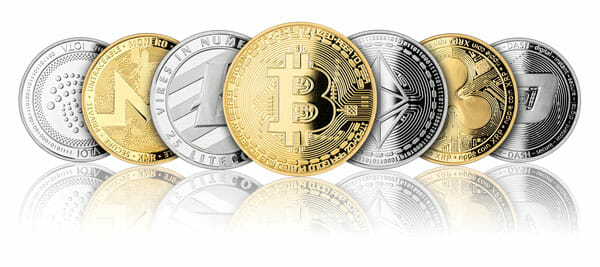- Stability and security. Made in Switzerland.

Unprecedented government debt, rampant monetary expansion and enormous financial imbalances render our current financial system extremely unstable.
Politicians and central banks around the world are less and less capable of managing the resulting risks. Debt creation at the expense of the next generation and creeping inflation are the consequences of this inaction. The unprecedented creation of money out of thin air and the politically motivated manipulation of interest rates by central banks are having a direct impact on the value of our money.
Since the abolition of the gold standard in the US in 1971, money has lost all links to real assets. This lack of backing can lead to excessive debt and inflation.
You are currently viewing a placeholder content from YouTube. To access the actual content, click the button below. Please note that doing so will share data with third-party providers.
More InformationToday, money does not fulfill its function as a store of value very well. Due to the constant increase in the money supply, our money is constantly losing value through inflation. We are convinced that we must return to a currency backed by real assets.
National currencies, such as the Swiss franc, euro or US dollar, might serve as a unit of account in the short term. However, in the medium to long term, they do not fulfill this task, as the future real value of these currencies cannot be predicted and is always influenced by political interests.
Fiat money works well as a medium of exchange. Cash and electronic transfers can be used to make payments (almost) everywhere and bank transfers allow transactions to be made across the globe. However, developments in connection with blockchain technology clearly show that this can all be achieved even more efficiently.
On July 15, 1971, then US President Richard Nixon detached the American currency from its historical link to real assets: he closed the so-called gold window. Since then, the central banks of other countries have no longer been able to exchange their accumulated dollars for gold at the US Federal Reserve. Since then, the US dollar is no longer tied to gold. On May 27, 1987, Switzerland also decided to discontinue the gold backing of the Swiss franc. Until then, Switzerland was the last legal system that had maintained a gold peg for its currency.
No major currency has been anchored in the real world ever since. The consequences were dramatic: an unprecedented expansion of the money supply in the form of an explosion of debt has been accompanied by an ongoing loss of the purchasing power of fiat money. Essentially, this means that our money can no longer fulfill one of the three monetary functions – that of preserving and storing value.
For the average investor, this means that almost all nominal savings investments, such as savings accounts or even government bonds, will result in losses in the medium and long term. This is further accelerated by the policies of the central banks, that are pushing interest rates close to, or even below, zero by means of monetary policy interventions, such as the quantitative easing programs of the Fed or the ECB, due to the almost unsustainable debt levels of many countries.

Today’s money has lost its function as a store of value, which also affects its ability to fulfill the other core functions: Swiss francs, euros or US dollars are only able to serve as a unit of account for a short time period.
A benchmark should obviously be a qualitatively consistent standard. Due to the permanent loss of purchasing power, both in terms of consumer goods and assets, this function no longer exists. Over a longer period of time, it is difficult to tell at first glance whether a good has risen in price primarily because it has itself become more expensive – for example due to greater demand while its supply remains the same – or whether the corresponding price increase primarily reflects the loss of purchasing power of the respective currency. In an environment where the real equivalent value of the expected payment is no longer clearly foreseeable when the contract is concluded, it is difficult to enter into long-term contracts.

Eventually, the third monetary function will also be lost. Of course, as long as state currencies are designated as legal tender and citizens can only use them to pay their tax debts, these currencies will retain their medium of exchange function. However, we are now seeing a an interesting shift. For example, in the canton of Zug, in the “Crypto Valley”, certain taxes can be paid in cryptocurrencies. In the US, the first states have returned to the roots of the US dollar: Utah and Oklahoma, for example, officially recognized gold and silver as legal tender again. El Salvador recently became the first country in the world to recognize Bitcoin as an official means of payment.
We are convinced that the demand for real-asset-backed currencies on the blockchain will rise sharply in the near future. The RealUnit share token serves as a digital store of value.